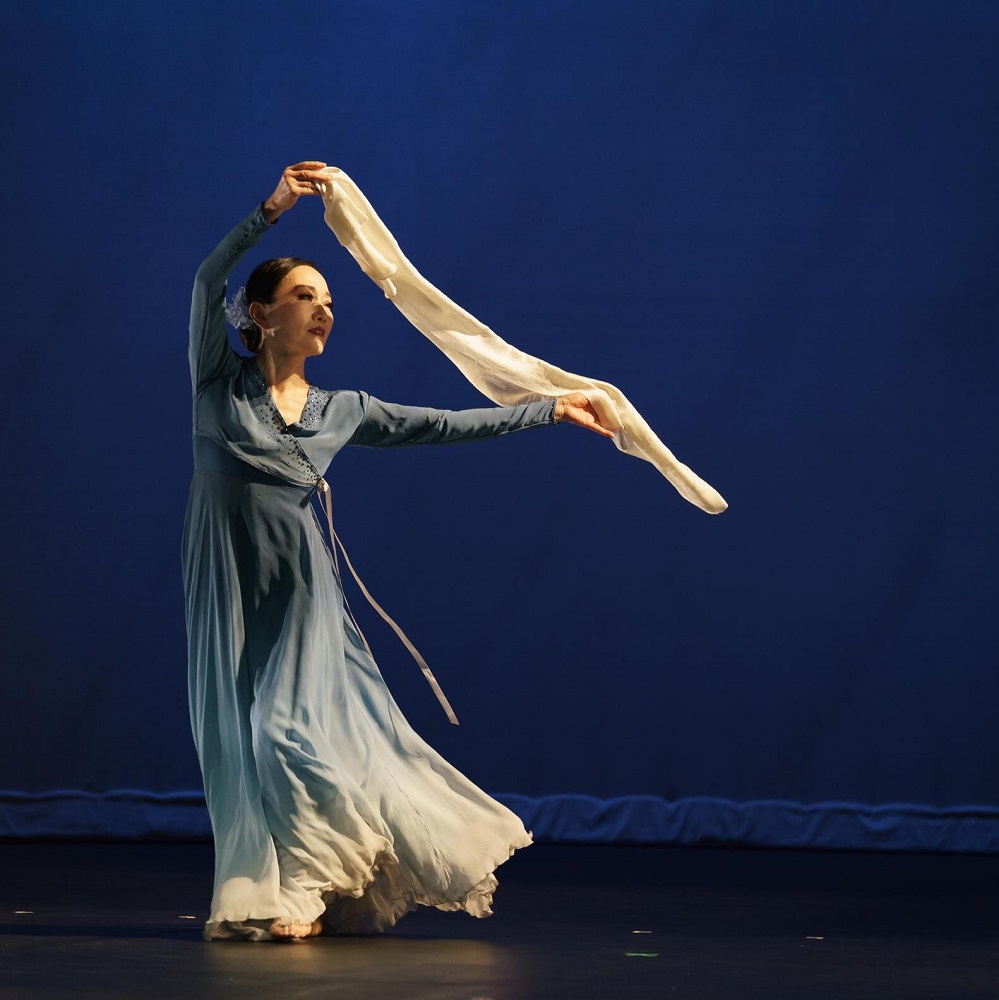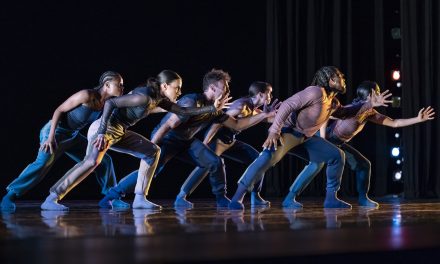James MahKween is the creator and curator of REFLECT, a showcase that is the culmination of a choreography workshop which focuses on a central topic or theme. This year that theme was Home and what that meant to, or inspired within, each choreographer. The series was presented by and at Highways Performance Space in Santa Monica, one of Southern California’s most prominent venues for experimental work. This past Sunday, REFLECT featured ten choreographers of varying skill levels and experience. A few works depicted difficult situations at home, while others focused on more pleasant times.
MahKween has provided a much-needed platform for these young hopefuls to work in a safe environment and to have the opportunity to perform their choreography. He writes, “I developed REFLECT as a showcase to all selected choreographers to present work that tells a story of a reflective moment. To enlighten our audience on subject matters present, past, and personal!”
FaithxMERGE was choreographed by Jamie Mick Burton. Performed by Burton and Christina Morales, the work opened with beautiful mirrored floor work and, except for several arbitrary leaps and turns, stayed true to Burton’s movement theme. The two characters loved one another but had difficulty deciding whether to continue the relationship. In the end, they clasped hands and chose love and home.
Juli Kim’s background is in Korean dance. She is a good choreographer and a lovely dancer. Here, Kim went out on an artistic limb to create her own version of the well-known solo, Dying Swan. She did so complete with the original music by Pyotr Ilyich Tchaikovsky, and it worked. Kim did not copy the original ballet version but interrupted the story into her own movement vision. Dressed in an all-white Korean style dress, a simple long red ribbon hung from her chest illustrating a bleeding heart or the wound that caused the swan’s death.
Joseph Lister’s Day O9 showed potential. The duet was intense with strong performances, especially by Norine Myers whose intensity dominated the stage. The dance needed editing and worked on connecting the movement sections, but the love/hate relationship between the two characters was clear. Myers’ partner was William Feldon.
Tribe is a well-crafted work choreographed by Rachel Turner. She understands how to construct a dance without the structure being visible. I especially enjoyed the canon section that broke up into several different but related solos. The five women took us through several personal dynamics within a community or home environment; the communal support, the single outcast and the vying for leadership. The cast of Tribe included Anne Burns, Abigail Boland, Alicia Martin, Tamara Mayer, and Nadine Tran.
Mychal Vandell was the choreographer of Gone, an investigation into the pain and anguish over the loss of a loved one. This work suffered a great deal from the lack of focus on details. The emotions were raw, but often over expressed, or dancers dropping character during unrelated movement. It was a good choreographic study that needs re-examining. The cast included: Chantel Davis, Porsche Norman, Talia Renshaw, and Hailey Weishaup.
Hard News, choreographed and performed by Latrice Postell, told a simple story of a woman who could not continue with her life unless she picked up her cellphone and share the bad or hard news that is troubling her. For me, the performance was much stronger than the choreography. Hard News delivered its message early on and the rest was well danced filler.
Alan Perez and Jamal Wade gave beautiful performances in their co-choreographed Trepidity. It was not apparent what the opening flashlight lit scenes were meant to convey: men meeting in dark places; closeted desires? The trepidation between the men to venture into a loving relationship, however, was crystal clear. This was a work that should be kept and developed.
The Lost was choreographed by James MahKween and performed by Ajah Muhammad, Brittany L. Spivey, Malcolm Dunbar, and Kayla McPherson. A family grieves over the lost of a loved on and emotions become intense. The work has moments, but it is riddled with movement that has no relationship to the dance or the subject matter; the worse offense being a female dancer suddenly performing a series of fouetté turns. The subject matter is relevant and deserves movement that reflects its severity.
Brothers?, choreographed by Victor Hugo, was a dance that was at times, difficult to watch because of the subject matter: sexual abuse. A young boy was being pursued by a relative or family friend while the child’s older self was portrayed in the background struggling with the emotional scars inflicted upon him because of that abuse. A secured thick rope represented the emotional stranglehold that this traumatic experience had and continued to have on the man. No matter how he tried, he could not find peace with what happened to him during his youth. The subject matter is a very important one to undertake. Hugo stated his case early on without clearly connecting the younger boy to his older self or creating a definite resolution. Simply walking off stage is not a solution or resolution. The cast included: Josiah Cortez, William Feldon, and Peyton Nakamura.
Putting together a jazz routine does not a dance make. Clearly The Get Down, choreographed by Laronica Southerland, was meant to create a party atmosphere, and there is nothing wrong with that. It is, however, my opinion that Southerland did not meet the designated assignment of reflecting on home. The dancers were: Malcolm Dunbar, Tirek Johnson, Deshawn Jones, Deonte Newell, Chatiera Ray, Queen Sam, Brittany L. Spivey, and Laronica Southerland.
Details matter! Costumes matter! How you wear your hair matters! How one edits the music matters! How a dancer handles props Matters! How dancers get on and off the stage matters! And the list goes on. When a choreographer asks an audience to pay money to see their work performed, it is incumbent upon that person to pay close attention to every minute detail visible to each pair of eyes sitting in the house. Loose ends do two things to a choreographer’s work: distract from and weaken her/his message.
Featured photo by James MahKween.










Thank you for this! Informative and some really useful notes. Thank you for coming to the show, I will take these to heart. – from the assistant choreographer of Day 09.